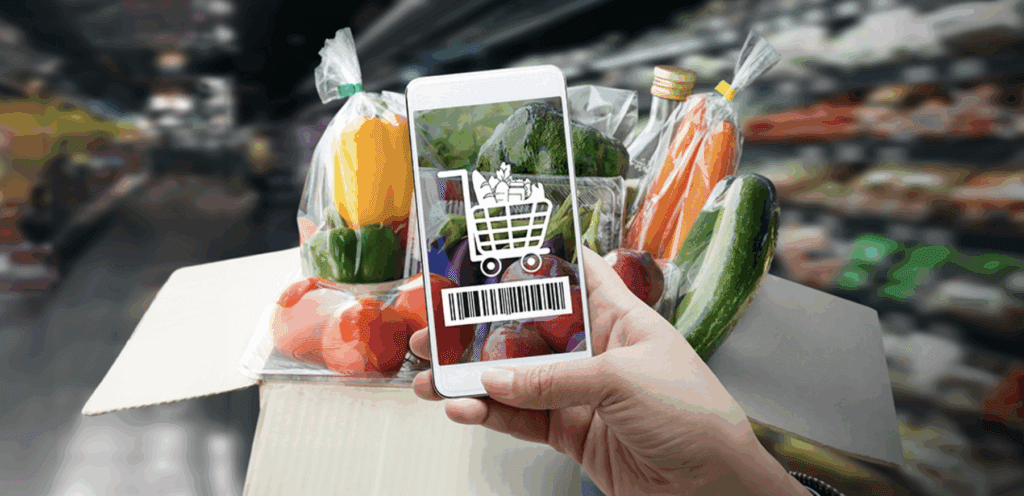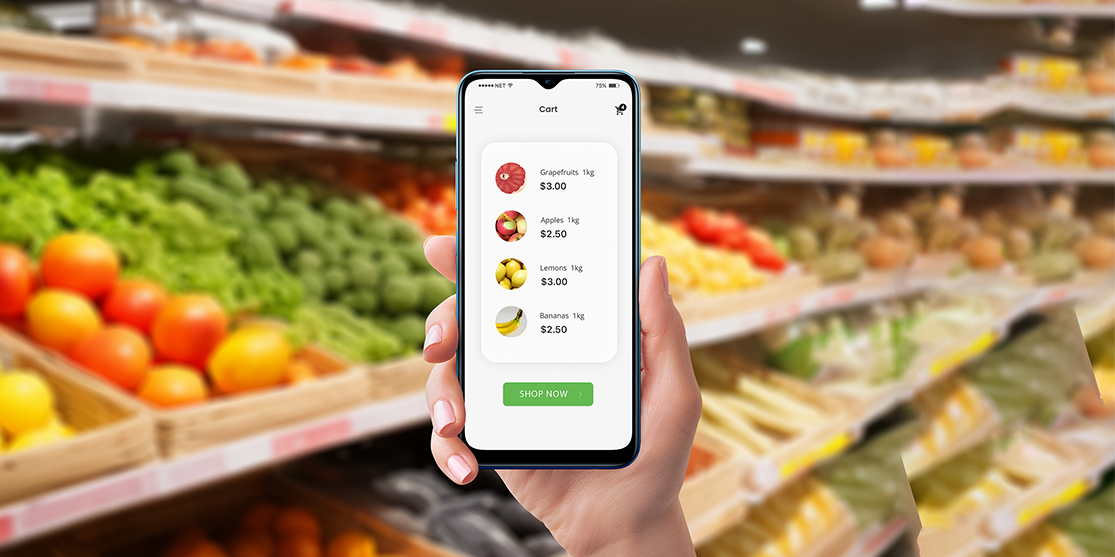The Grocery Scramble: How Unified Commerce Is Conquering the Aisles


These are uncertain times for the global grocery industry. Price inflation and cost-of-living crises mean that consumers everywhere are tightening their belts. There is little room for extra spending. In Europe, for example, industry growth in 2023 -some 8.6%- failed to keep up with food price inflation, at 12.8%. Sales were actually below 2019 levels according to research by consultancy McKinsey. The real question for 2024 and beyond is not when consumer confidence will return, but what can grocery retailers do to give themselves the best chance of surviving in this uncertain climate?
Understanding the Industry
What do we mean by the grocery industry? The global grocery industry covers the buying, selling, and distribution of food and household products to consumers. Players in this industry include supermarkets, hypermarkets, convenience stores, and online retailers, as well as discount stores. There are also some key trends emerging in this area. They include:
- The Growing Use of E-Commerce. Consumers are increasingly turning to online grocery shopping, attracted by its convenience and time-saving benefits. Retailers are therefore investing in user-friendly platforms, faster delivery options, and wider online product ranges.
- The Rise of Discounters and Private Labels. Research from McKinsey suggests that discounters and private labels were the real winners in Europe in 2023. These stores and suppliers gained from customer price sensitivity and made strong inroads into the market despite often being less convenient than the alternatives.
- Convenience Is Leading the Way: In 2024, convenience, speed, and digital options reign supreme in the world of consumption. Shoppers are seeking agile and personalized shopping experiences that adapt to their dynamic lifestyles. This trend is driving the rise of small boxes and convenience stores, where purchases are smaller but more frequent.
- Focus on Customer Experience. As the online market becomes more competitive, retailers are recognising the importance of creating a seamless customer experience. They are therefore looking more closely at opportunities to offer personalised recommendations, establish and build loyalty programs, and enable easy in-store pickup options for online orders. Buy online, return in store is becoming an important differentiator.
- Increasing Interest in Sustainability. There is no question that consumers are increasingly concerned about the environmental and social impact of their activities—and also that where they can afford to do so, they are voting with their feet. Grocery retailers are responding with efforts to reduce packaging waste, source ethically, and promote local produce.
- Greater Integration of Technology. As in many other sectors, there is a massive increase in the use of technology across the grocery industry. We are seeing automation in warehouses, including robot picking of online orders, voice-activated ordering, and data-driven inventory management. All these are important to retailers’ desire to increase efficiency and cut costs in any way possible to improve their margins.
Bringing these together, there is a clear shift towards an industry that is more digital, more convenient, and more cost- and environmentally-sensitive. This has implications for retailers.
A Landscape of Legacy Systems
Traditionally, grocery stores have operated in silos. In-store point-of-sale systems were generally not connected to e-commerce platforms, often for legacy reasons. However, this led to inaccurate information about stock levels both online and in-store, and therefore resulted in frustrated customers. Fulfilling online orders often meant pulling items from store shelves, affecting in-store availability and information. Loyalty programmes were not integrated with sales systems, hindering the use of personalised promotions.
This disjointed approach had two problems. First, it was extremely inefficient, making life much harder for retail staff, and also increasing costs. This became a significant problem as pressure on margins increased. Second, and much more importantly, it led to poor customer experiences. It was, in fact, almost impossible to offer a seamless omnichannel experience—a key consumer demand in today’s digital world.
The answer for many grocery industry players has been unified commerce platforms, systems that bring together online and in-store sales and inventory management, enabling the creation of seamless customer experiences and improved efficiency.
Consolidating and Unifying
Unified commerce platforms bring together and consolidate various systems into a single hub. These systems include point-of-sale, e-commerce, order management, inventory control, and customer relationship management. This consolidation delivers:
- White Label E-Commerce. Enhance sales with cutting-edge AI capabilities that tailor the shopping journey for each customer. Suggest ideal substitutions and complementary products based on user behavior, facilitate searches with a powerful search bar, and more— all designed to amplify demand generation.
- Personalised Experiences. A single source of customer data means that retailers can develop and deliver targeted promotions and loyalty programmes, fostering customer engagement.
- Real-time Inventory Visibility. Online customers can see what is available in particular stores, and therefore know whether a trip is worthwhile. They can also often reserve items for in-store collection. This avoids frustration because their desired item is out-of-stock.
- Omnichannel Fulfilment. Orders can be made online or in-store, and fulfilled from stores, warehouses, or a combination. This improves efficiency and means that customers get their goods as quickly as possible.
- Enable Live Communication with Clients. Allowing them to track their orders in real-time and engage in live conversations with support agents. Customers can request substitutions, inquire about new products, and resolve issues promptly. This seamless communication channel ensures a flawless customer experience.
- Improved In-Store Experience. Features like mobile apps that allow product location and self-checkout can streamline the in-store experience. This again reduces customer frustration and maximizes the chances of completing sales.
With these benefits on offer, it is no wonder that many major grocery retailers have taken the plunge and invested in unified commerce. For example, Walmart has used a unified commerce platform to integrate its online grocery and in-store shopping, offering both delivery and kerbside pickup. Kroger has leveraged its unified platform to offer personalised coupons based on past purchases. Both companies have seen a significant rise in customer satisfaction and sales.
M&S, the multinational grocery, home and fashion retailer, wanted a way to offer a better and more seamless customer experience. It also wanted to add more to its digital channels, such as live shopping, and needed a better order management system. In the time since it invested in a unified commerce platform, it has seen a 23.5% increase in order volume, a 45.7% increase in average order value, and a 49% increase in brand revenue.
It’s impossible to discuss grocery commerce in a blog without acknowledging our esteemed partner in this field, Instaleap. Collaboratively, we are elevating the digital commerce platforms of numerous grocery outlets, including the industry giant, Lulu Hypermarkets. In a recent conversation with Bas Groot, VP International of Instaleap, I delved into the top advantages that groceries are experiencing due to efficient picking, timely delivery, and customer retention features they offer. For sure, this is a very comprehensive discussion but let me add the top ones he mentions:
Some Instaleap clients have already achieved impressive operational metrics in e-commerce. For example, they report 99% on-time deliveries, 0% out-of-stock items, an increase of over 20 points in their Net Promoter Score (NPS), and a tenfold improvement in productivity. These results showcase efficient and profitable e-commerce operations, which is on top of the groceries’ e-commerce metrics these days.
Looking into the Future
The digital transformation of the grocery industry still has challenges. Implementing unified platforms requires investment in technology and integration expertise. It may also need a cultural shift to break down departmental silos and encourage collaboration.
Despite these challenges, it is clear that unified commerce is the future of the grocery industry. As the technology evolves, we are likely to see further innovations such as AI-powered demand forecasting and personalised recipe recommendations. What is certain is that customers will remain at the centre of a seamless and convenient shopping experience, whether they’re browsing the aisles or ordering from their couch.






